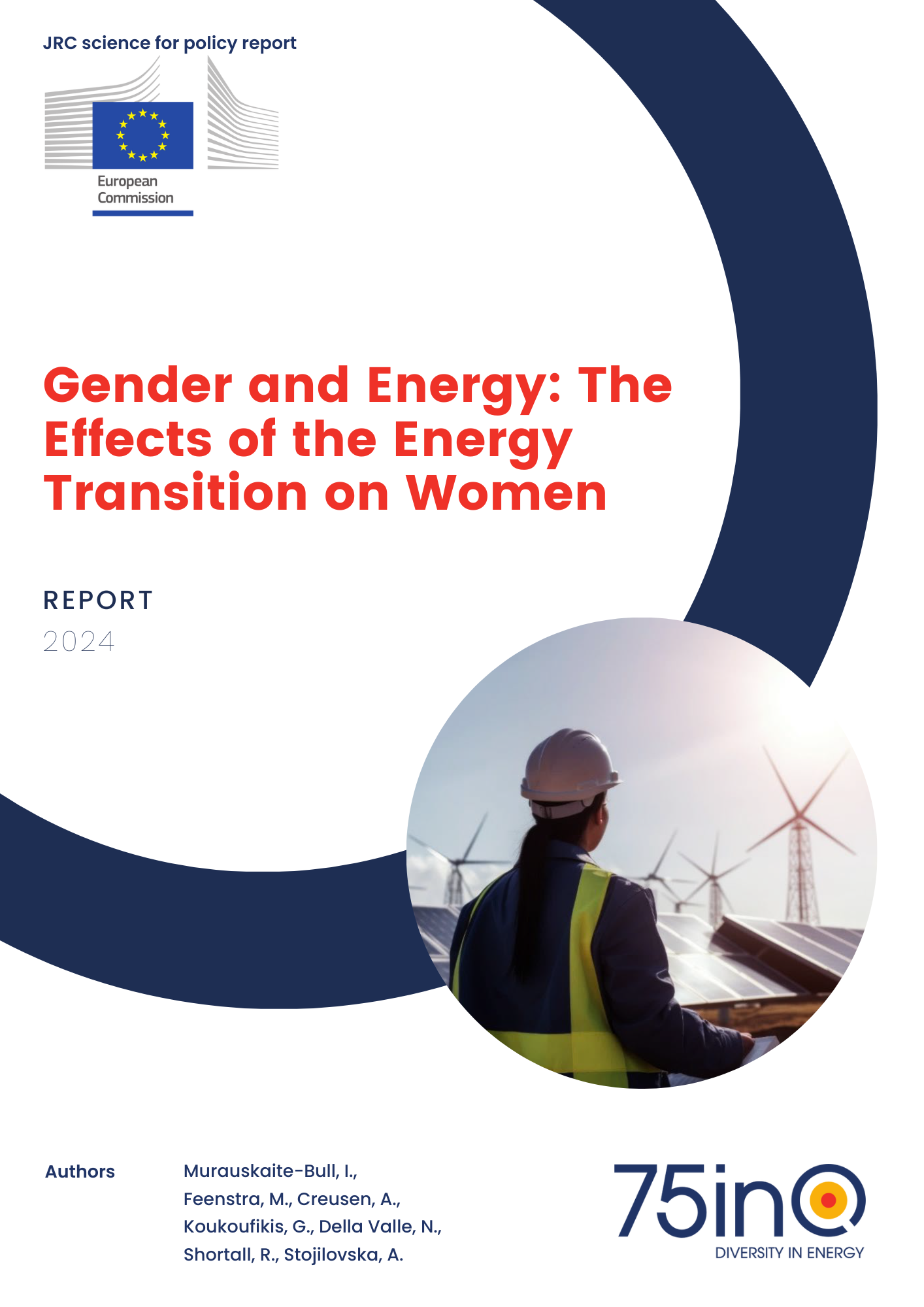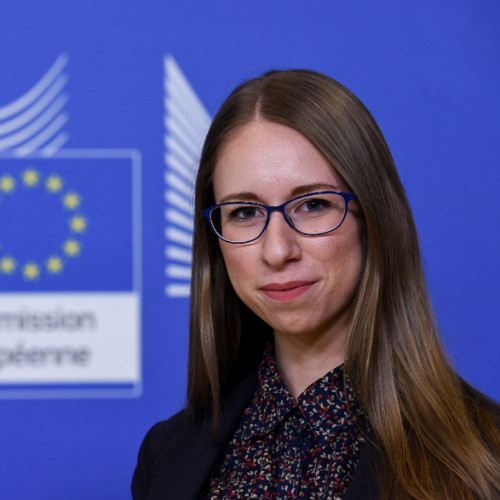GEnder and energy: the effects of the energy transition on women
JRC science for policy report
Murauskaite-Bull, I., Feenstra, M., Creusen, A., Koukoufikis, G., Della Valle, N., Shortall, R., Stojilovska, A.
2024
Citation
Murauskaite-Bull, I., Feenstra, M., Creusen, A., Koukoufikis, G., Della Valle, N., Shortall, R. and Stojilovska, A., Gender and Energy: The effects of the energy transition on women, Publications Office of the European Union, Luxembourg, 2023, doi:10.2760/860118, JRC132744.

Introduction
Europeans are facing a combination of crises: the aftermath of the pandemic, the ongoing climate crisis and the energy crisis caused by the rapid increase of energy prices due to Russia’s war against Ukraine. How people can anticipate, respond and counter a crisis is related to elements like their access to services, their ability to afford these services and their mental and physical resilience. These elements are not the same for all people. People’s socio-economic position determines their resilience to crises. Eliminating social inequalities and realising gender equality form an essential pillar of the European Union’s strategic goal towards social inclusion. In this report, we dive deeper into two pressing issues and their interconnectedness: gender equality and the energy transition.
The European Green Deal pledges that in the face of the climate emergency, a just and fair transition towards carbon neutrality will be carried out to not leave anyone behind. There are still gender-related inequalities in the energy sector that have to be better addressed to ensure a successful energy transition. Recent studies illustrate that there are fewer women in decision-making roles (including policymaking) and women still clearly lack representation in the energy sector workforce, e.g., they accounted for an average of 32% of the workforce in the renewables sector in 2019 (IRENA 2019). Similarly, they are underrepresented in higher education in science, technology, engineering, and mathematics (STEM) sub-fields that are highly relevant to the energy sector and that remain heavily male-dominated. In 2021, less than a third of engineering, manufacturing and construction and less than a fifth of ICT higher education students were female (26.9%)1.
Moreover, recent data show that women are more likely to live in energy poverty (Petrova et al. 2013) and that female-led households experience higher rates of energy poverty (Koukoufikis & Uihlein 2022). Women are frequently more exposed to energy (and transport) poverty due to smaller amounts of disposable income, being overrepresented in single parent households as well as other reasons related to various physiological characteristics. Being exposed to energy poverty comes with clear consequences such as health risks and social exclusion. There is growing attention to and recognition of the gender dimension of energy poverty and of the energy transition. Gender imbalances in the energy system need to be addressed in the energysector supply chain and workforce, as well as in the distributional impacts of the energy transition itself.
Executive summary
Europeans are facing a combination of crises: the aftermath of the COVID-19 pandemic, the ongoing climate crisis and the energy crisis caused by the rapid increase of energy prices due to the Russia’s war against Ukraine. How people can anticipate, respond and counter a crisis is dependent on elements like their access to services, their ability to afford these services and their mental and physical resilience. These elements are not the same for all people. People’s socio-economic position determines their resilience to crisis. Eliminating social inequalities and realising gender equality form an essential pillar of the European Union’s strategic goal of social inclusion.
The objective of this study is to deepen our understanding of the connection between gender inequalities and participation in the energy transition. The findings rely on a comprehensive literature study of the complex relationships between the energy transition and gender. We analysed a range of policy interventions and good practices within energy poverty and related arenas, which can be used to reduce energy poverty for women, and increase women’s representation in the energy sector and the overall empowerment of women during the energy transition. This report was led by the Joint Research Centre in collaboration with 75inQ, an expert centre on diversity in the energy transition based in The Netherlands.
Key Conclusions
Key Conclusions
A successful energy transition requires attention to the social dimension. There is an urgent need to recognise the effects of the global energy transition at different policy levels and on societal groups and to understand how people can engage in the process on an equal basis. The energy transition then becomes a vehicle for a socially just and fair society that provides clean energy for all and leaves no one behind. To create the foundations for achieving an inclusive energy transition, we conclude that it is necessary to:
- Mitigate gender inequalities in access to affordable and sustainable energy services in policies, instruments and mechanisms across the energy system and at all governance levels;
- Acknowledge the intersecting and cross-cutting structural causes of the gender dimension of energy poverty by breaking silos in policy formulation and implementation;
- Collect, report and monitor gender-segregated data on the inclusive energy transition at macro, meso and micro level to have a better assessment of the impact of energy transition on women;
- Stimulate political and managerial engagement of governments and corporate partners in the energy system to ensure the equal participation and representation of women in the energy transition.
There is a growing body of good practice evident in initiatives for an inclusive and just energy transition which can serve as inspiration for the implementation of these recommendations. At the international and European levels, an increasing number of policy initiatives and directives demonstrates political commitment to a just energy transition. The policies of EU Member States serve not only to implement European guidelines but also to integrate national socio-political and cultural contexts. These national policies call for local partners, residents, local energy initiatives and companies to orient themselves towards a sustainable energy transition, but this should also be reflected in financial, legal and political support.
Main findings
- Women are frequently more exposed to energy (and transport) poverty, often due to lower levels of disposable income and being overrepresented in single parent households.
- As a result, women are more exposed to various consequences of energy poverty such as adverse health risks and social exclusion.
- There are still gender-related inequalities in the energy sector that have to be better addressed to ensure a successful energy transition: women accounted for an average of 32% of the workforce in the renewables sector in 2019.
- The relationship between gender inequality and the energy transition is gaining increasing attention. However, this subject deserves even more attention in the years ahead to address the remaining questions.







